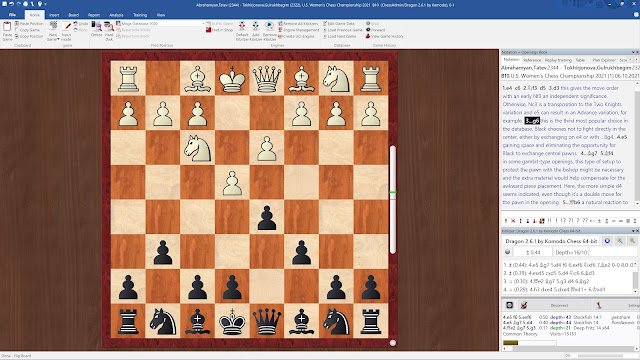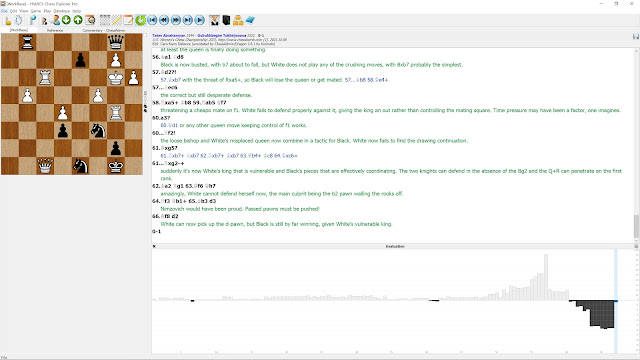Following two previous losses in rounds 1 and 2 (an "0-0" result, also known as "castling short") in the 2021 U.S. Women's Championship, WGM Tatev Abrahamyan in the third round scored for the first time against one of the strongest players in the field, veteran IM Anna Zatonskih. While Abrahamyan must have been desperate for a win at this point, as White she did not choose an aggressive opening, instead going into a positional double-fianchetto Reti.
Some strong players have followed this kind of strategy for a long time - see Kasparov's must-win victory in the English over Karpov - and it is also a very current approach, thanks to its successful use by world champion GM Magnus Carlsen. The idea is to reach positions where you can "just play chess" and outplay your opponent, rather than trying to overpower them with deep preparation or tactical wizardry; at the top levels, that is rarely possible, in any event. In this particular case, Abrahamyan may also have wanted a calmer approach to start, given the grueling previous two rounds.
Abrahamyan's first aggressive choice comes on move 12, when she chooses a disruptive move in the center to directly challenge Black's forces. Instead of closing the center in response, Zatonskih exchanges on e4 and gives White a freer game, which is evidently what Abrahamyan wanted. However, White's pieces start getting tangled and by move 22 Black has a nice position. However, Black does not have a knockout plan and decides on move 23 to avoid a bishop exchange, which is significant strategic decision. White manages to untangle her pieces, then take the initiative by planting a knight on d5 - important psychologically, even if in an objectively equal position. Although White chooses to exchange the knight, d5 is later occupied by a rook and the exchange results in a winning position, with a final tactical flourish.
Credit goes to Abrahamyan for not buckling under Black's small but real positional pressure and advantage - illustrated at the bottom by the the HIARCS Chess Explorer Pro "Evaluation Explorer" chart - while finding ways to make herself more active and eventually target Black's weaknesses (for example the a-pawn). It's also worth noting the game highlights a number of themes mentioned in "The fundamental importance of the relative value of pieces" post, especially regarding piece exchanges.





